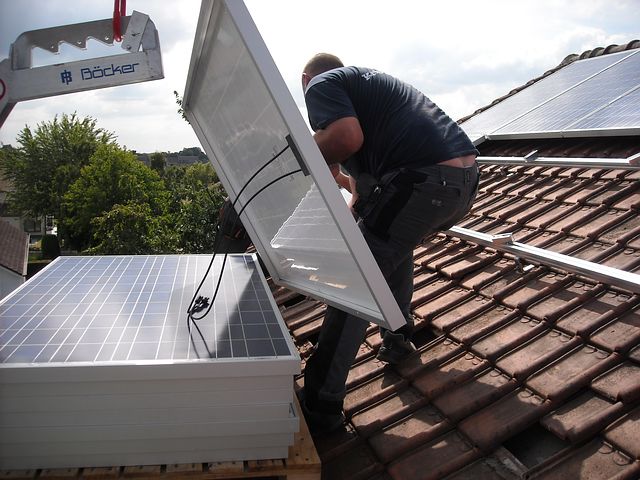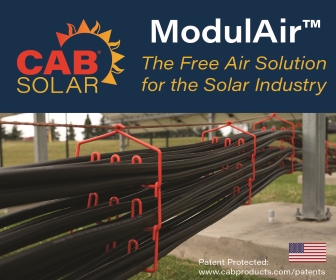Making Sense of Your Industrial Solar Lease
In the age of clean energy, property developments are evolving to accommodate eco-friendly trends. This push towards sustainability has prompted industrial property owners to implement green technology that not only bolsters their properties, but also allows them to maximize the profitability of their assets. As with any new technology, rooftop solar leases possess nuances that set them apart from typical commercial leases. There are a few facets of solar leasing that owners should know about and fully understand.
Ownership
Solar leases generally contain an extremely specific delineation of who owns what. The solar facilities, which could be considered "fixtures" under property law, are expressly and exclusively owned by the solar tenant. In addition, solar leases specifically delineate who owns the various "Environmental Attributes" and "Incentives" that are allocated to or generated by a solar facility, including carbon trading credits, renewable credits, tax credits, accelerated depreciation, etc. (this is usually assumed to be the solar tenant). Care should be taken to ascertain each party's ownership of the various assets, and Environmental Attributes and Incentives.

In addition, industrial property owners need to be mindful of whether they have granted rights in the building's rooftop to any of the building tenants. In multi-tenant buildings, the landlord generally retains exclusive ownership and control of the roof. In single-tenant buildings or ground leases, the roof may be under the tenant's control, including maintenance and repair rights. If the building tenant is responsible for the roof's maintenance under the terms of the building lease, the landlord may need to amend the building lease to obtain control over the roof and take over the maintenance and repair responsibilities, so that the landlord may legally lease the rooftop to the solar provider, if the economics work.
Financing
Given that solar developers make such a large scale, long-term investment in the solar facilities to be installed, they usually obtain leasehold financing from traditional lenders, and equity from tax credit investors. The federal investment tax credit is currently 26 percent of most of the costs of the solar facility, and is taken over the first five years of the solar facility's operation. Solar lenders and tax equity investors require the solar lease to contain several lender-friendly provisions, including notice and cure rights, as well as other terms more likely to be seen in a ground lease than a building lease, including the right to obtain a subordination, non-disturbance, and attornment agreement (SNDA) from any landlord lenders.
Maintenance
Since the term of the solar lease will be 20-25 years, sometimes with options to extend for another five or 10 years, most solar tenants are looking for a site with a brand new roof at the lease inception. That said, however, the landlord will want to retain the option to replace the roof during the term of the solar lease in the case of emergency, and carve out opportunities to repair the roof during the term of the solar lease, if that becomes necessary. If the roof is not new at the inception of the solar lease, but contains 10 or 15 more years of useful life, a building can still accommodate a solar facility. However, landlords will need to negotiate with solar tenants in order to allocate the cost sharing of a mid-term roof replacement, as well as the mechanical and operational logistics of having to remove and reinstall the panels once the new roof has been completed.

Additionally, landlords should be mindful that solar tenants require a certain degree of insolation assurance, i.e., an understanding that sufficient sunlight will reach their solar facilities for maximum energy production. It is common for solar leases to contain protective language specifying that landlords will not do anything to impair the sunlight or cast shadows over the solar facilities. Landlords should work to carve out certain rights that would preserve their autonomy and flexibility for leasing out their primary asset (the building), including the right to carve out existing rooftop installations and landscaping. Landlords will also want the right to relocate and increase the size of rooftop HVAC units, in the event that a new building tenant demands greater HVAC capacity (keeping in mind that the landlord may need to compensate the solar tenant for decreased insolation).
The specialized approach required by these particular challenges necessitates a solid foundation of knowledge by the owner, as well as the expertise of a lawyer or consultant. While learning the intricacies of a new type of leasing can seem daunting at first, once property owners familiarize themselves with this trend, they can reap the benefits afforded by solar rooftops.
 Jennifer L. Ioli is a commercial real estate and environmental attorney at the Boston law firm Sherin and Lodgen. She has experience in acquisitions, development, leasing, and financing. In particular, Jen represents retailers, developers, and institutions on all aspects of commercial real estate transactions, including advising on environmental regulation and due diligence. She can be contacted via email at [email protected].
Jennifer L. Ioli is a commercial real estate and environmental attorney at the Boston law firm Sherin and Lodgen. She has experience in acquisitions, development, leasing, and financing. In particular, Jen represents retailers, developers, and institutions on all aspects of commercial real estate transactions, including advising on environmental regulation and due diligence. She can be contacted via email at [email protected].
Sherin and Lodgen | www.sherin.com
 Aaron Olson is a Business Development Manager at Black Bear Energ, an owner's representative specializing in onsite renewable deployment for institutional property owners and REITs. The company represents 60 clients nationally who own or control more than 4 billion square feet of real estate space with a variety of asset types. He can be reached at [email protected].
Aaron Olson is a Business Development Manager at Black Bear Energ, an owner's representative specializing in onsite renewable deployment for institutional property owners and REITs. The company represents 60 clients nationally who own or control more than 4 billion square feet of real estate space with a variety of asset types. He can be reached at [email protected].
Black Bear Energy | blackbearenergy.com
Author: Jennifer L. Ioli and Aaron Olson
Volume: 2020 March/April










.png?r=5061)

